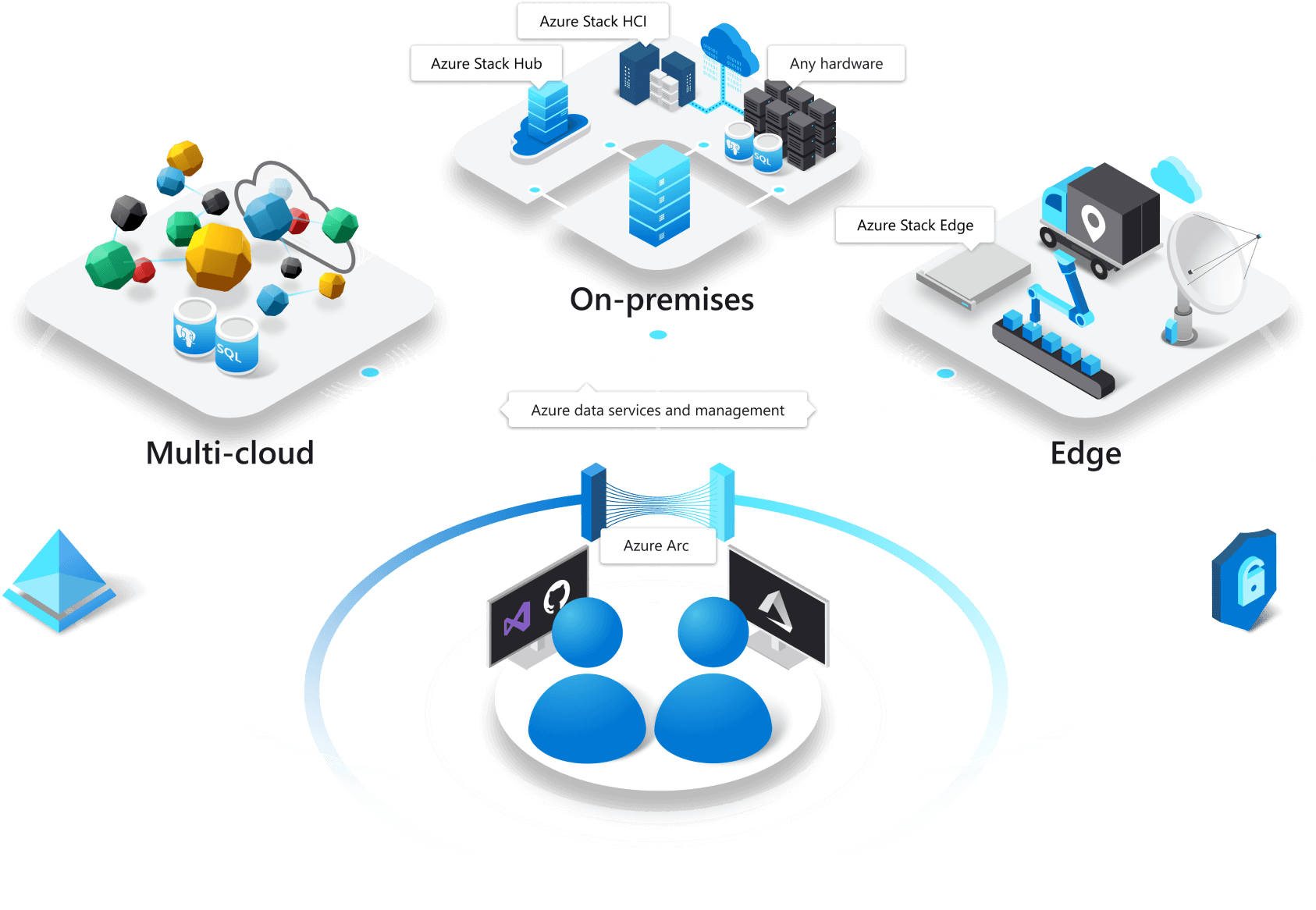Azure Arc: A Game Changer for New and Old Azure Customers Alike
Perhaps the most significant announcement at Ignite 2019 was Azure Arc, Microsoft’s new hybrid, multi-cloud platform.
With Arc, Microsoft is adding Kubernetes, containers, and new infrastructure management solutions that enable users to leverage the Azure management tools and data services they know and love – like SQL Database and Azure database for PostgreSQL Hyperscale – as a service on any platform.
And when Microsoft says any platform, they mean that literally: from bare metal Linux servers to AWS and GCP, Azure Arc lets users deploy applications and manage them via the Azure portal on any VM with a Kubernetes cluster.

Why Azure Arc is a Gamechanger
Regardless of platform, the Azure ecosystem will now look and feel as though it were running on a native Microsoft platform. This results in superior compliance, role-based action controls, and auditing capabilities, as well as the ability to build and deploy containerized applications across infrastructures.
“Hundreds of millions of Azure resources are organized, governed and secured daily by customers using Azure management,” says Julia White, Microsoft’s CVP of Azure. “Azure Arc extends these proven Azure management capabilities to Linux and Windows servers, as well as Kubernetes clusters on any infrastructure across on-premises, multi-cloud and edge. Customers can now have a consistent and unified approach to managing their different environments using robust, established capabilities such as Azure Resource Manager, Azure Shell, Azure Portal, API, and Azure Policy.”
With Arc, organizations can manage resources deployed in Azure, on legacy hardware, and in any other cloud platform through a single control plane. This represents a significant step towards the “single point of truth” enterprises have been striving for since cloud technology began picking up momentum. Customers can leverage the automation capabilities of Azure API and ARM templates.
For example, users can rollout a set of public-facing VMs in Azure while provisioning them in a data center running legacy databases. This enables the application of tagging, RBAC, and identity policies to resources.
The “single point of truth” is found in Azure Monitor, where all resources registered with Arc send their logs. This enables insights to be mined from distributed, previously disconnected infrastructure sources.
Additionally, companies can use Azure Security Center to ensure security and compliance across IT resources, regardless of where they’re deployed. With a single button push, file systems can be encrypted across all VMs. Patches can be administered as soon as a vulnerability is detected. Policies need only be defined once, and are automatically applied across Azure, the data center, and other cloud platforms.
What Arc Means for Enterprises
Azure Arc is helping companies who either don’t want – or don’t have the budget – to upgrade to or migrate away from their legacy infrastructure to enter the hybrid cloud game. Running an x86 server with Oracle on Linux that hasn’t been upgraded since 2008? No problem – your infrastructure can easily register with Arc to show up in Azure Portal in the same resource group and region that runs a web app that talks to the database.
In short, VMs are the center of the Azure Arc world, which means those with legacy infrastructure no longer have to choose between an expensive hardware upgrade or a lengthy cloud migration to leverage the full benefits of Azure.
Additionally, Azure Arc, Kubernetes and AKS make it simple to package greenfield applications into containers and run them in Azure. When combined with the fact that Microsoft and Alibaba co-published specifications for modelling microservices made up of multiple containers, Microsoft is set to dramatically simplify application modernization and digital transformation with Arc.
Even for enterprises already fully invested in the Azure Public Cloud, Arc is still important. Microsoft’s new hybrid cloud offerings such as Azure Stack HCI, Azure Stack Hub, and Azure Stack Edge are all set to be managed through Arc.
Have questions about how to implement and benefit from Azure Arc at your organization? Contact the Azure Cloud experts at Hanu today. We’re happy to answer any questions you might have. We will also provide a FREE assessment of your entire IT infrastructure.



